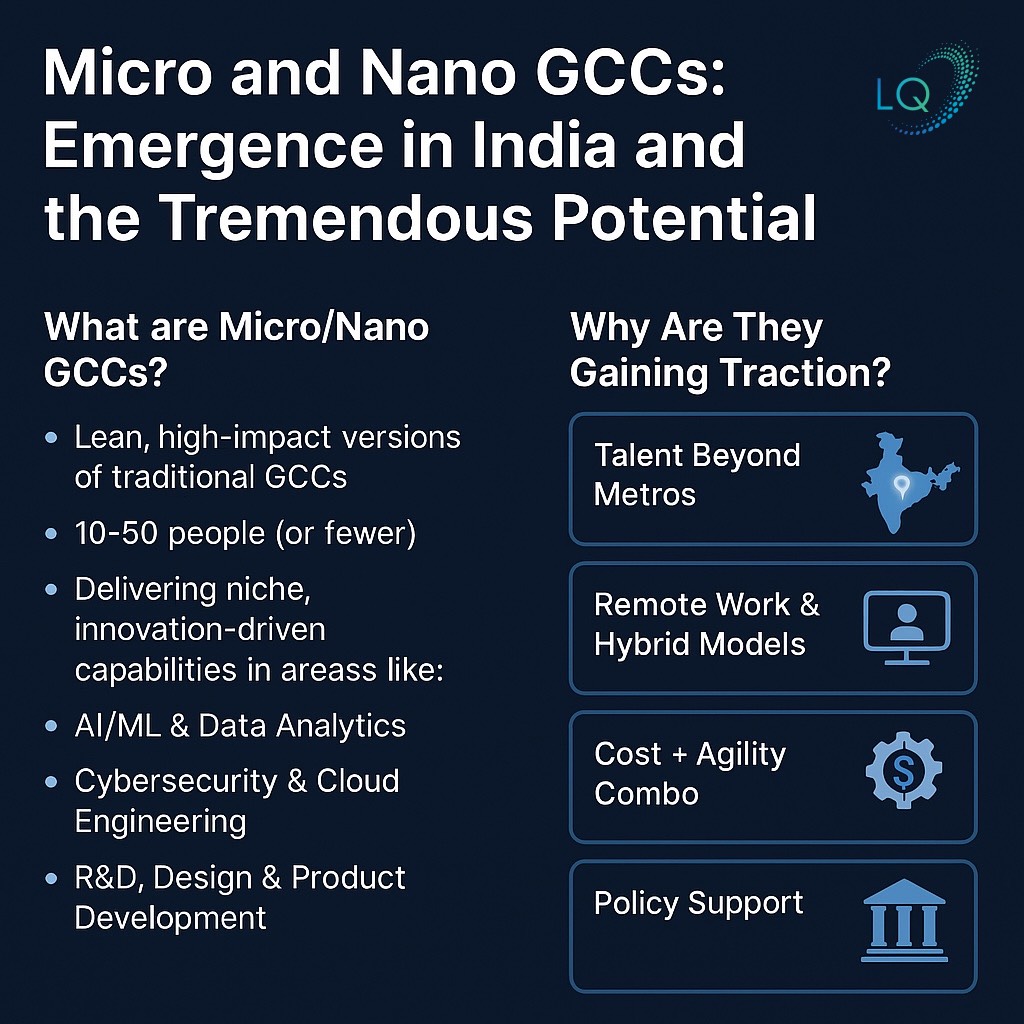India has long been the go-to destination for Global Capability Centers (GCCs). But a quiet revolution is underway — Micro and Nano GCCs are redefining how global enterprises tap into India’s talent, agility, and cost-efficiency.
What are Micro/Nano GCCs?
These are lean, high-impact versions of traditional GCCs — sometimes just 10–50 people (or even fewer) — delivering niche, innovation-driven capabilities in areas like:
- AI/ML & Data Analytics
- Cybersecurity & Cloud Engineering
- R&D, Design & Product Development
Unlike massive GCCs, these centers are laser-focused, fast-moving, and often act as innovation labs or specialist pods.
Why Are They Gaining Traction?
Several forces are driving this model in India:
- Talent Beyond Metros: Tier-2 cities offer deep talent pools, lower costs (~25–30% savings), and rising digital infrastructure.
- Remote Work & Hybrid Models: Post-pandemic work culture enables distributed teams, making nano-centers viable across geographies.
- Cost + Agility Combo: These centers require minimal setup but deliver fast, high-ROI results — perfect for experimentation and innovation.
- Policy Support: Indian central and state governments are incentivizing GCC setups in smaller cities through special frameworks and infrastructure support.
- Mid-Market Momentum: Startups and mid-sized firms, previously priced out of GCC models, are setting up micro-centers to access Indian expertise — unlocking a vast untapped segment.
Rise of Tier-2 & 3 Cities
Cities like Jaipur, Coimbatore, Kochi, Vadodara, Indore, and Vizag are emerging as GCC hubs. These locations:
- Offer lower attrition and higher employee engagement
- Enable proximity to local universities and emerging tech clusters
- Benefit from improving logistics and digital access
With coworking spaces, better connectivity, and policy tailwinds, India’s GCC ecosystem is going hyper-local and hyper-specialized.
Strategic Advantages
- Faster Time-to-Value: Quicker pilots, decision-making, and deployment
- Specialist Talent: Domain-specific pods driving focused outcomes
- Cost-Efficient Growth: Low-risk entry, with ability to scale fast
- Resilience: Distributed operations reduce single-location dependencies
The Outlook
India’s micro and nano GCCs are projected to grow 15–20% annually, with Tier-2 cities gaining significant share. The model is reshaping the global delivery playbook — not just for cost, but for innovation, flexibility, and proximity to emerging talent.
For global businesses looking to stay agile, scale smart, and innovate rapidly — a micro- GCC strategy may just be the bold move forward.


 April 03,2025
April 03,2025 



























